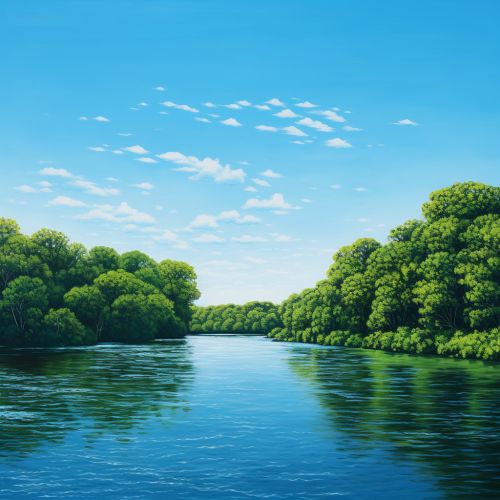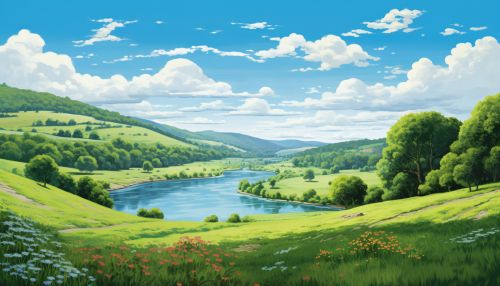Ayeyarwady
Geography
The Ayeyarwady (also spelled Irrawaddy) is a river in Myanmar (Burma), and one of the country's most vital geographical features. The river flows from north to south, originating from the confluence of the N'mai and Mali rivers in Kachin State. The Ayeyarwady River is the largest river in Myanmar and the most important commercial waterway commercial waterway. With a length of about 2,170 kilometers, it is the country's longest river, providing a vital source of water for irrigation and transportation.


Hydrology
The Ayeyarwady River has a drainage area of about 404,200 square kilometers. Its average discharge is approximately 13,000 cubic meters per second, with the maximum discharge often exceeding 30,000 cubic meters per second during the monsoon season. The river's hydrology is complex, influenced by the annual monsoon rains and melting snow from the Himalayas Himalayan Mountains.
Flora and Fauna
The Ayeyarwady River is home to a rich variety of flora and fauna. The river's basin supports several types of forests, including tropical rainforests, deciduous forests, and teak forests. These forests are home to a variety of species, including tigers, elephants, and various species of monkeys. The river itself is home to a variety of fish species and is particularly known for the critically endangered Ayeyarwady dolphin Ayeyarwady dolphin.
Economy
The Ayeyarwady River plays a crucial role in the economy of Myanmar. It serves as a major transportation and trade route, connecting various parts of the country. The river is also vital for agriculture, providing water for irrigation for the country's rice paddies. In addition, the Ayeyarwady River is a source of fish for local communities and is used for hydroelectric power generation.
Environmental Concerns
There are several environmental concerns associated with the Ayeyarwady River. These include deforestation, pollution from industrial and agricultural runoff, and the potential impacts of dam construction. These issues pose threats to the river's biodiversity and the livelihoods of people who depend on the river for their livelihoods.
